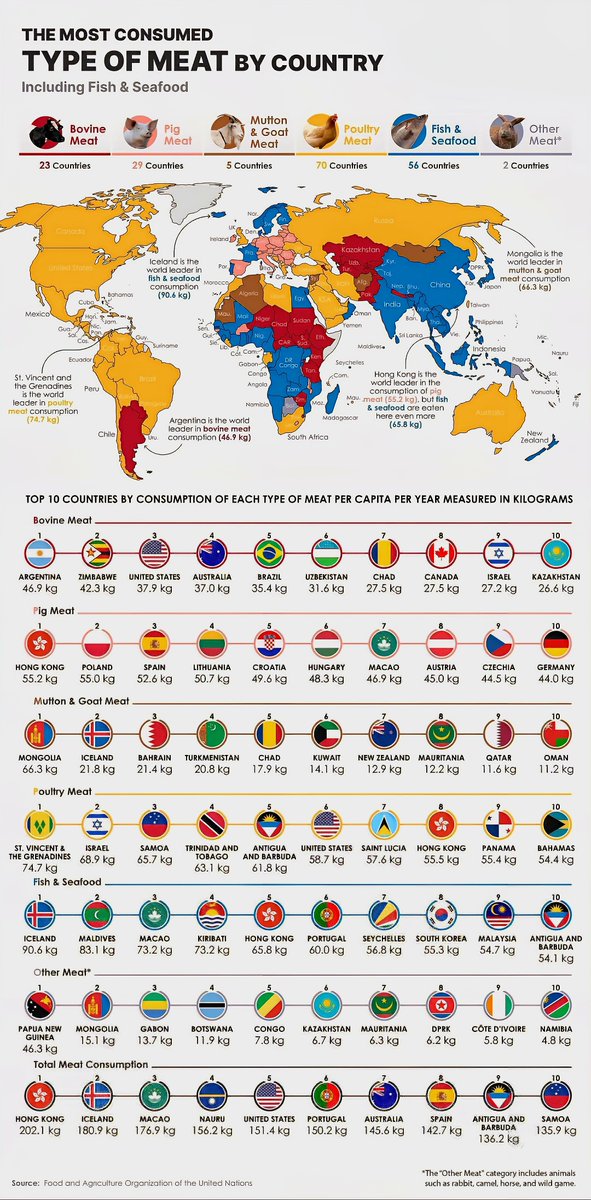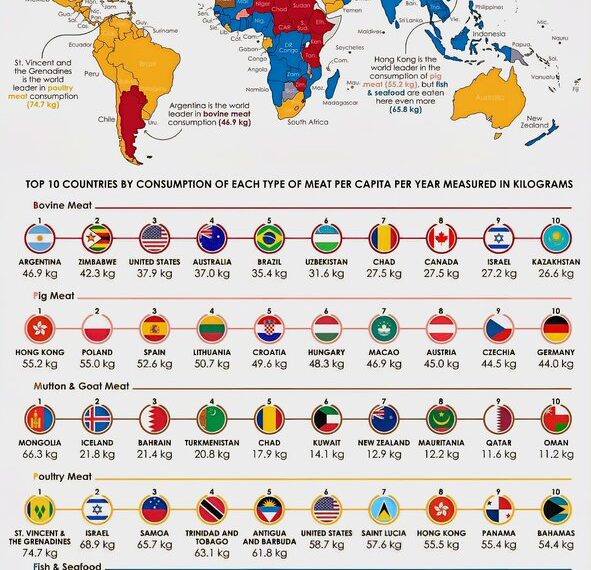Select Language:
The Most Popular Meat in Each U.S. State

1. Beef Dominates in the Midwest and Southwest
Many states across the Midwest, including Nebraska, Kansas, and Oklahoma, show a strong preference for beef. This trend aligns with the region’s history of cattle ranching and the prominence of beef as a dietary staple. From classic steaks to burgers, beef remains a staple at American tables in these areas, reflecting the local agricultural industries’ influence.
2. Poultry Leading the Pack in the South and Southeast
States like Georgia, Alabama, and Florida primarily favor chicken and turkey. The South has a long-standing tradition of poultry production, making chicken dishes a common and affordable protein choice. Turkey, especially around the holiday season, further cements poultry as a regional favorite.
3. Pork Preference in the Midwest and Parts of the South
Pork, mainly in the form of bacon, ham, and shoulder, is the preferred meat in states like Iowa, Missouri, and South Carolina. These states have a rich history of pork farming, and dishes like BBQ ribs, pulled pork, and ham are deeply ingrained in local cuisine.
4. Seafood Wins in Coastal States
In coastal states such as California, Maine, and Louisiana, seafood emerges as the most consumed meat. For example, lobster and clams are household staples in Maine, while shrimp and crawfish dominate in Louisiana’s cuisine. California’s diverse population also leads to a variety of seafood dishes being widely enjoyed.
5. Game Meats and Specialty Proteins in the Mountain West
States like Colorado, Utah, and Montana tend to favor game meats such as elk, deer, and bison. These meats are often associated with outdoor lifestyles and hunting traditions. Bison meat, in particular, has gained popularity for its health benefits and unique flavor.
6. Vegetarian and Plant-Based Options on the Rise
While traditional meats remain popular, an increasing number of states are seeing a rise in plant-based protein consumption. California, New York, and Oregon lead this shift, with more households embracing vegetarian and vegan options, reflecting broader national and global dietary trends.
7. Meat Trends Reflecting Cultural Influence
Immigration and cultural diversity also shape meat consumption. For instance, states with large Hispanic communities, such as Texas and New Mexico, often see higher consumption of beef and pork, coupled with traditional dishes like tacos and carnitas. Meanwhile, Asian American communities, particularly in California, celebrate a variety of fish and seafood dishes.
8. The Impact of Food Trends on Meat Consumption
Emerging health concerns and environmental awareness influence meat preferences, with some states opting for leaner options like chicken and turkey, and others exploring alternative proteins such as plant-based meats or sustainably farmed seafood. This year, these trends continue to evolve, shaping future dietary habits.
9. The Changing Face of American Meat Consumption in 2025
As we progress through 2025, the landscape of meat consumption in the U.S. remains diverse and dynamic. While traditional preferences hold strong in many regions, the influence of health trends, sustainability, and multiculturalism continues to reshape what Americans choose to put on their plates.
Note: Dietary trends and regional preferences are subject to ongoing change based on factors like market availability, cultural shifts, and climate considerations.







